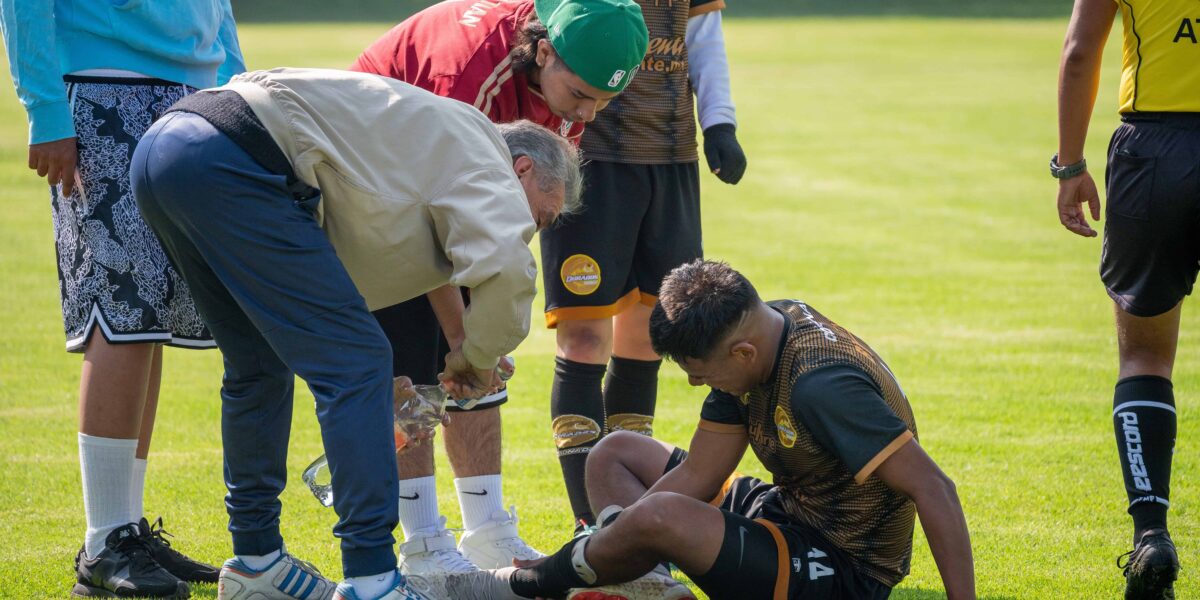Soccer is a sport that stirs passion unlike any other. The exhilarating feeling of your favorite team winning is matched only by the agony of them losing.
But, perhaps, even more painful is the emotional and physical anguish that comes with getting injured while striving to score the winning goal yourself. As a Soccer player, there’s nothing worse than being sidelined due to an injury, a small tweak or major setback can derail your season and leave you feeling defeated.
In this article, you will delve into the worst soccer injuries and the crucial role that physical therapy can play in keeping you on the pitch.
What Are The Worst Soccer Injuries?
ACL Tears
The Anterior Cruciate Ligament (ACL) is a vital ligament in your knee that provides stability during movements. One wrong twist or turn, and you could potentially face the excruciating pain and despair of an ACL tear.
An ACL injury can keep you sidelined for months, and the pain of watching your team play without you is almost as gut-wrenching as the physical pain itself. To avoid this injury, players should focus on strengthening the muscles around the knee, particularly the quadriceps and hamstrings, which help to stabilize the joint.
Concussions
Concussions are a significant concern in soccer, as injuring your head can have long-lasting effects on your health. Concussions can affect your mood, personality, and cognitive abilities long-term. Physical Therapy plays a vital role in preventing concussions by focusing on strengthening the neck and upper body muscles, helping to stabilize your head during sudden impacts, and reducing the risk of you receiving a whiplash-like injury.
Another serious injury that soccer players can face is a concussion, which is caused by a blow to the head. Concussions can be very serious and have dangerous long-term effects on brain health.
The emotional cost of this injury is high, as it can affect a player’s mood, personality, and cognitive abilities. To prevent concussions, soccer players should wear headgear and avoid heading the ball whenever possible. Players should also be aware of their surroundings and avoid reckless collisions with other players.
Ankle Sprains
Ankle sprains are among the most common soccer injuries and can leave you stuck in a cast or a brace, leaving you unable to play alongside your teammates or playing with your children. The moment when you’re sprinting toward the goal, and your ankle twists unexpectedly, can result in weeks of rehabilitation and missed opportunities in your life.
How Can I Prevent Sports Injuries? The 3 Most Common Ways To Prevent Soccer Injuries
Proper Nutrition
One of the most important ways you can prevent soccer injuries is to maintain a healthy and balanced diet. Yes, we all love a bacon and cheeseburger but try and stick to options like Mashed Sweet Potatoes and Lean Beef where possible.
You need to fuel your body with the right nutrients to maintain your strength and stamina throughout games and practice. Eating a balanced diet that includes plenty of fruits, vegetables, lean proteins, and healthy fats can help you stay in shape and avoid injuries.
Strength Training
Another method you can use to prevent soccer injuries is through strength training. By building your muscle mass, you can increase your resistance to injury.
Focus on building up your core muscles, such as the abs and lower back, as well as your legs and arms. This will help to stabilize your body and prevent, falls, twists, and other injuries you could face on the pitch.
Proper Conditioning
Lastly, proper conditioning is key in helping you avoid soccer injuries. Physical therapy can enable you to improve your balance and proprioception, enhancing your ability to react to on-field situations more safely.
By combining neck strength and improved body control, physical therapy becomes an integral part of minimizing your risk of concussions in soccer, allowing you to enjoy the game without worrying about whether you will still be able to play with your children tomorrow.
Are You Struggling With A Soccer Injury and Need Help Dealing with it?
Physical therapy has become an essential component of injury prevention for many professional soccer players including Cristiano Ronaldo and Lionel Messi (Maybe you’ve heard of them). By taking steps to prevent injuries and seeking the help of a physical therapist, you can stay on the field and maintain your competitive edge.
At Sports Physical Therapy, we specialize in helping soccer players recover from injuries and prevent future ones. Give us a call at (425) 628-2031 to schedule a (free!) injury screening and learn more about how we can help you stay injury-free this season.
At SPT, We believe in the power of personalized care and tailored treatment plans. That’s why we offer the Free Sports Injury Assessment, a comprehensive evaluation designed to provide you with hands-on time with our skilled physical therapists.
During this assessment, our experts will take the time to listen to your concerns, answer all your questions, and gain a deep understanding of your specific needs. Through this assessment, we’ll identify areas for improvement, address any existing issues, and create a customized treatment plan to enhance your performance, prevent injuries, and maximize your potential.
Our expert team is here to support you, offering you their knowledge, and helping you elevate your game to new levels.
Don’t miss out on the opportunity to make this season your best one yet. Schedule your Sport Ready Assessment with SPT today by visiting our website or calling us at (425) 628-2031.
Arrange A Sports Ready Assessment at one of our five locations (Bellevue, Everett, Factoria, Kirkland, and Lake Stevens) today!
Free Additional Resources to Help You Prevent Soccer Injuries This Season
Read Our Blog – The 5 Most Common Spring Sports Injuries
Read Our Blog – What You Can Do To Be Sports Ready This Season
Follow Us On Social Media – Sports Physical Therapy Facebook and Sports Physical Therapy Instagram

